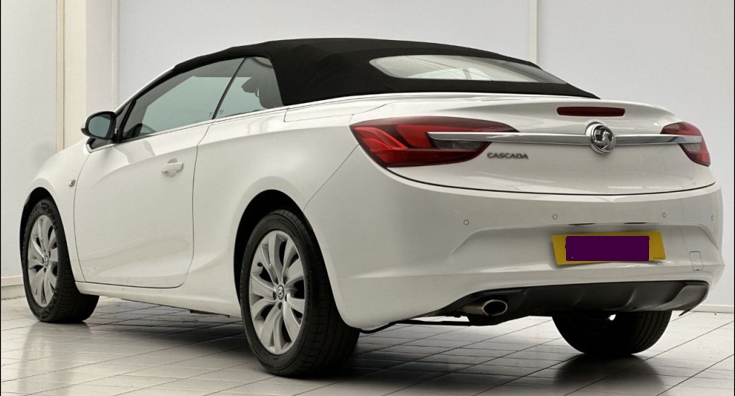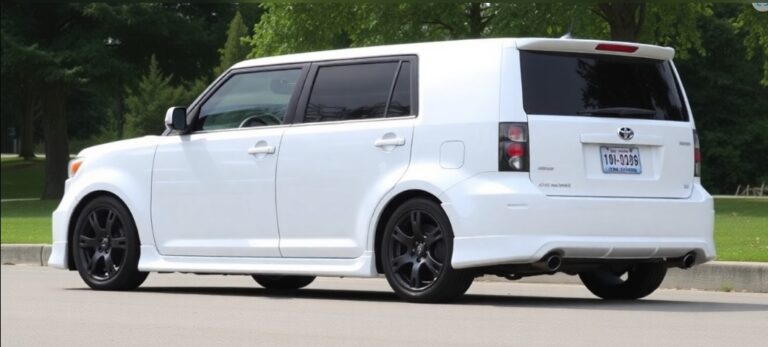The Rolling Laboratory: Charting the Evolution of the Ferrari FXX
In the pantheon of automotive legends, few names command as much reverence and intrigue as the Ferrari FXX. It was not a road car, nor was it a homologated race car built to conquer a specific series. The FXX was something entirely new: a high-performance, track-only development prototype sold not to collectors, but to a hand-picked cadre of “client test drivers.” It represented a paradigm shift in the relationship between a manufacturer and its most valued clientele, transforming them from mere owners into active participants in the future of Ferrari’s engineering. The evolution of the FXX is not a story of yearly facelifts or optional extras; it is a tale of relentless, data-driven improvement, culminating in one of the most extreme naturally aspirated machines ever created.
The Genesis: From Enzo to Experimental (2005)
To understand the FXX, one must first look to its magnificent progenitor: the Enzo Ferrari. Launched in 2002, the Enzo was the pinnacle of Ferrari’s road car technology, a carbon-fibre masterpiece powered by a screaming 6.0-litre V12 engine and packed with Formula 1-derived systems. Yet, for the engineers in Maranello, the strict regulations governing road legality and sanctioned motorsport were creative shackles. They envisioned a car free from compromise, a platform where cutting-edge ideas could be tested in the real world, on the crucible of the world’s greatest racetracks.
This vision materialized in 2005 as the Programma XX. The concept was audacious. Ferrari would build an extremely limited series of experimental cars based on the Enzo and sell them for approximately €1.5 million. The price tag, however, included much more than the machine itself. Buyers were inducted into an exclusive club, their purchase granting them entry into a two-year program of track events around the globe. At these events, a full team of Ferrari technicians and engineers would maintain the cars, analyse performance data, and debrief with the client drivers after every session. The FXX was a rolling laboratory, and its owners were the highly privileged, amateur test pilots.
The Original Beast: The Ferrari FXX (2005 – 2007)
The first iteration of the car, simply known as the Ferrari FXX, was produced between 2005 and 2007. While its silhouette was unmistakably derived from the Enzo, nearly every component was honed for ultimate track performance.
Engine and Drivetrain: The heart of the FXX was a heavily modified version of the Enzo’s V12. The displacement was increased from 5,998 cc to 6,262 cc by boring out the cylinders. Internal components were lightened and strengthened to allow the engine to rev higher and faster. The result was a staggering output of 800 PS (789 horsepower) at 8,500 rpm—a significant leap from the Enzo’s 660 PS. The engine’s soundtrack was a pure, unfiltered mechanical symphony of a ferocity rarely heard outside of an F1 paddock.
This power was channelled through a super-fast sequential gearbox, also derived from Ferrari’s F1 program. Shift times were slashed to under 100 milliseconds, a breathtaking speed for the era, delivering brutal, instantaneous gear changes that kept the V12 screaming in its power band.
Aerodynamics and Chassis: The FXX’s bodywork was a masterclass in aerodynamic warfare. Unlike the Enzo, which had to balance downforce with road-car aesthetics and practicality, the FXX was sculpted with a single purpose: to generate immense grip. The active, retractable spoiler of the Enzo was replaced by a massive, fixed bi-plane rear wing with adjustable flaps. The front-end featured a more aggressive splitter and larger air intakes, while the underbody was completely redesigned to create a powerful ground effect. The result was a claimed 40% increase in downforce over the Enzo, pinning the car to the tarmac with incredible force.
The chassis remained a carbon-fibre monocoque, but it was stiffened for the rigours of track use. The suspension was specially developed with bespoke geometry and dampers, while the braking system featured enormous carbon-ceramic discs developed by Brembo to provide tireless stopping power.
Technology and The Program: The most revolutionary aspect of the FXX was its sophisticated telemetry system. A host of sensors monitored over 39 different vehicle dynamics parameters in real-time, from throttle position and brake pressure to suspension travel and tyre temperatures. This data was not only displayed for the driver but was also transmitted back to the pits for analysis by Ferrari engineers, who could then advise the driver on how to extract more performance. After each event, the data was sent back to Maranello, where it provided an invaluable resource for developing future road and race cars, including the 458 Italia and the LaFerrari.
Production: Ferrari initially planned a run of 29 cars, all pre-sold to carefully selected clients. However, a 30th car was produced. Finished in black with a red pinstripe and bearing the number 30, it was specially built and presented to Ferrari’s legendary Formula 1 champion, Michael Schumacher, upon his first retirement in 2006 as a token of the company’s gratitude. Unlike the other cars, Schumacher’s FXX was kept at his disposal, free from the constraints of the official program schedule.
The Next Step: The Ferrari FXX Evoluzione (2007 – 2009)
The Programma FXX was an overwhelming success. The data gathered was immense, and the client test drivers, having honed their skills, were hungry for more performance. In response, Ferrari did not release a new model but instead offered an upgrade package that could be retrofitted to the existing FXX cars. This package, known as the Evoluzione kit, was introduced at the end of 2007 and represented the ultimate evolution of the FXX platform.
There were no distinct “trim levels” for the FXX in the traditional sense; there was simply the original car and the option to upgrade to the Evoluzione specification. This upgrade was a comprehensive overhaul designed to push every performance metric even further.
Engine and Drivetrain Evolution: The engineers in Maranello revisited the glorious 6.3-litre V12. Through revised intake manifolds, new camshaft profiles, and refined ECU mapping, they unlocked even more power. The output of the FXX Evoluzione surged to a monumental 860 PS (848 horsepower), now produced at a dizzying 9,500 rpm. This higher redline not only increased peak power but also gave the engine an even more visceral, spine-tingling shriek at full chat.
The transmission was also a key focus. Benefitting from two more years of F1 development, the gear-change logic was completely rewritten. Shift times were reduced by a further 20 milliseconds, dropping to a mere 60 milliseconds. This made the acceleration even more relentless and the driving experience more seamless.
Aerodynamics and Handling Evolution: The data collected from the original FXX program allowed Ferrari’s aerodynamicists to fine-tune the car’s downforce profile. The Evoluzione kit featured a new, more complex rear diffuser and modified profiles for the rear wing. The objective was not just to add more downforce, but to make the car’s aerodynamic balance less sensitive to changes in pitch and ride height, giving the driver more confidence through high-speed corners.
Perhaps the most significant handling upgrade was the introduction of a new, highly advanced traction control system (ASR). Developed in conjunction with Ferrari’s F1 team, the system offered the driver nine distinct settings, controllable via the steering wheel-mounted manettino. This allowed the driver to precisely tailor the level of electronic intervention to suit their driving style, track conditions, and tyre wear, enabling them to push closer to the car’s absolute limit.
Visual Identification: Visually, the FXX Evoluzione cars were distinguished by their revised aerodynamic components and often featured new liveries selected by their owners. The most common identifier was a prominent white “Evoluzione” decal on the endplates of the rear wing, a subtle but clear indication that this was the definitive, ultimate version of the FXX.
.
You’ve got that cool car, but is it resting in its own cool place?
It’s visually pleasing for the surrounding areas outside of your home to look as awesome as what’s stored inside your garage! If you desire a truly inspirational environment, you should check into these plans!

.
Legacy and Successors
The FXX program officially concluded in 2009. It was not the end but the beginning of a legacy. The program was so successful that it created a template for a new kind of automotive hyper-exclusivity. It proved that there was a market for customers who wanted to be deeply involved in the development process, to experience engineering at its most raw and untamed.
The knowledge gained from the FXX directly influenced a generation of Ferrari road cars, particularly in engine management, aerodynamics, and transmission technology. The program’s success spawned a lineage of XX cars, including the front-engined 599XX (2009) and the hybrid V12-powered FXX-K (2014) and FXX-K Evo (2017), each one pushing the boundaries further.
In retrospect, the evolution from the FXX to the FXX Evoluzione encapsulates the very spirit of the project. It was a living, breathing development platform that improved not on a fixed model-year schedule, but as soon as new data and technology allowed. The Ferrari FXX remains more than just a car; it is a landmark achievement that redefined the pinnacle of automotive ownership and engineering, forever cementing its place as the original and most pure expression of the ultimate track-day weapon.







